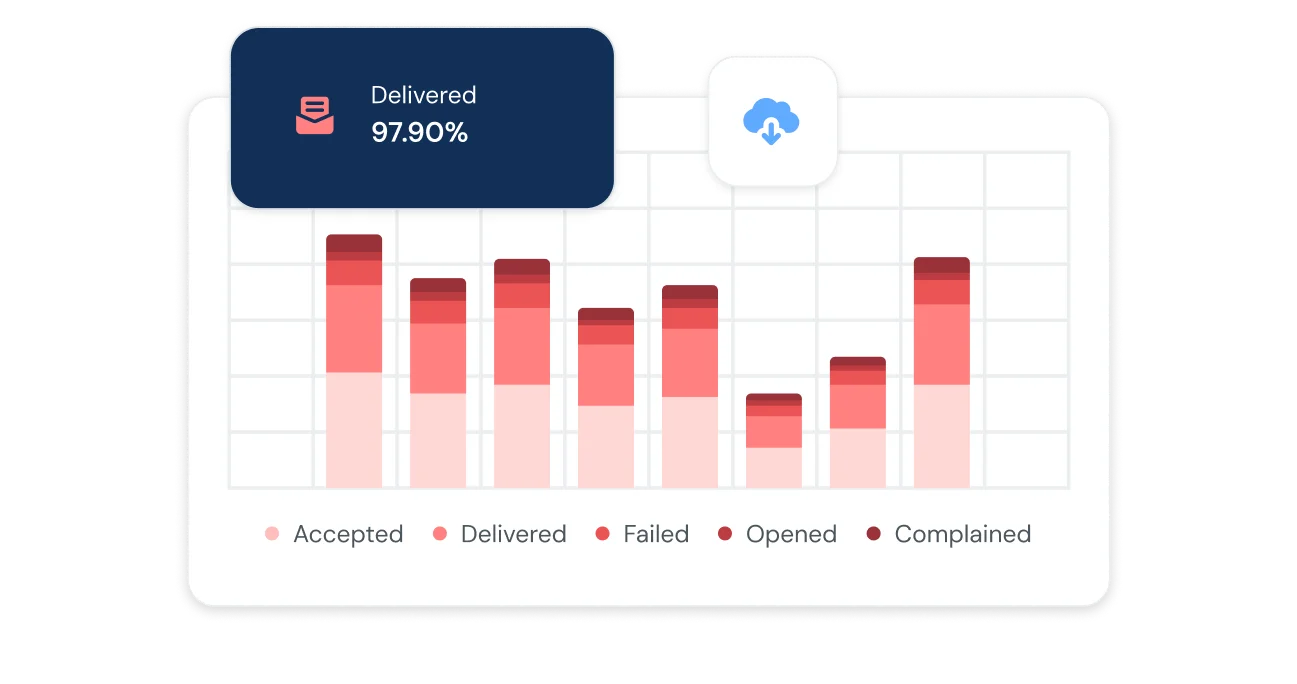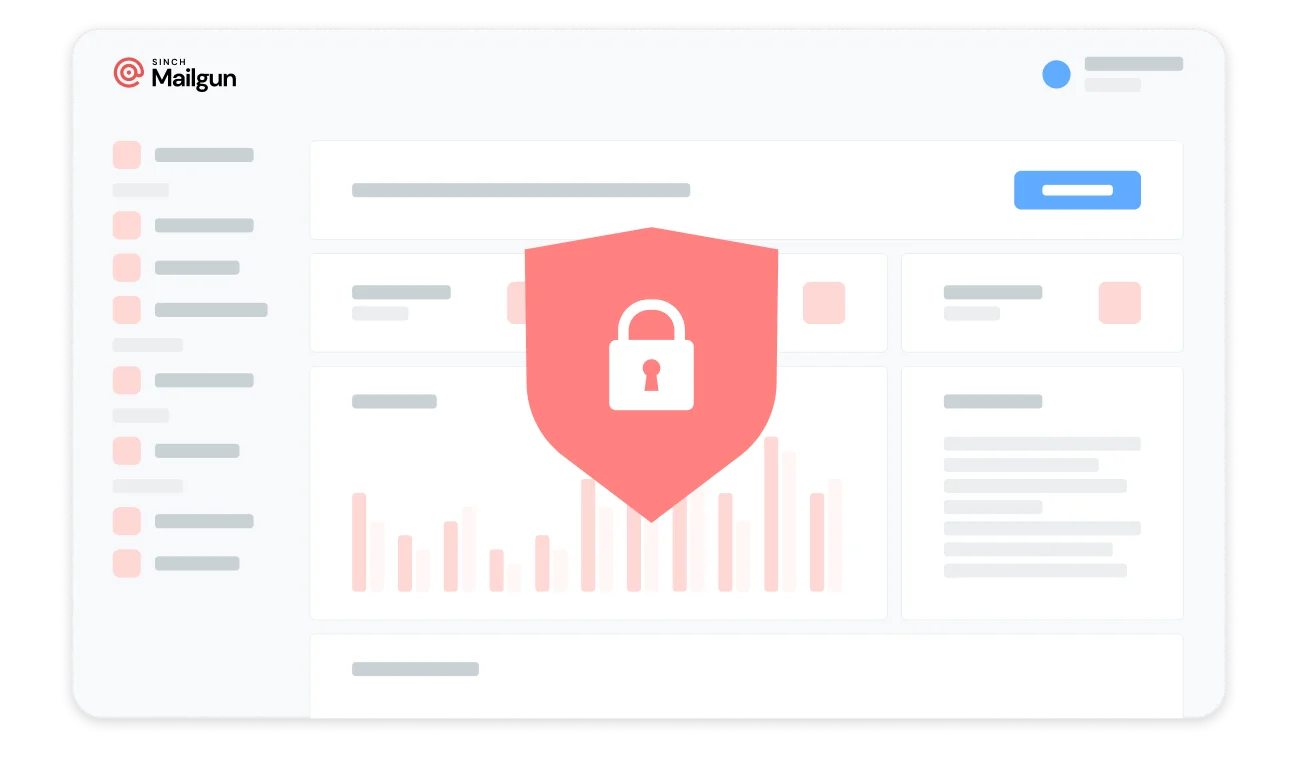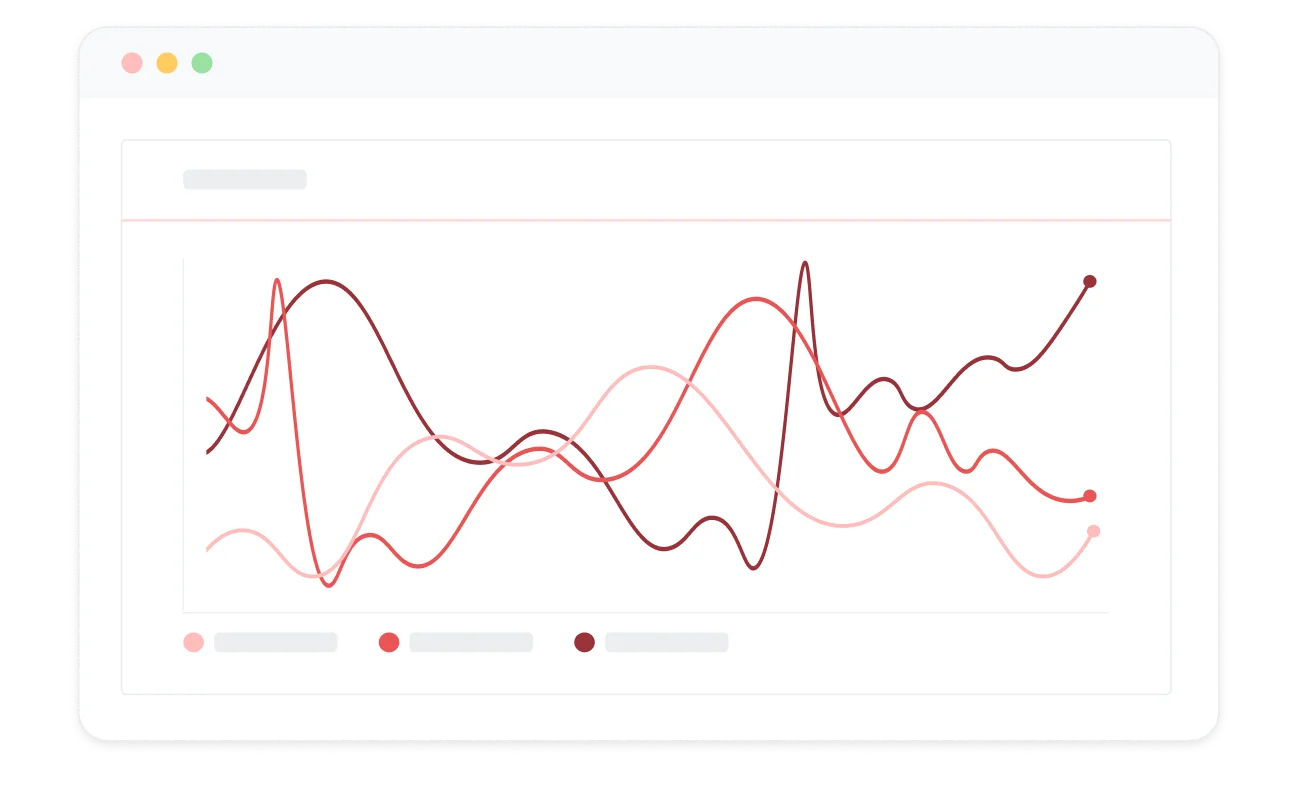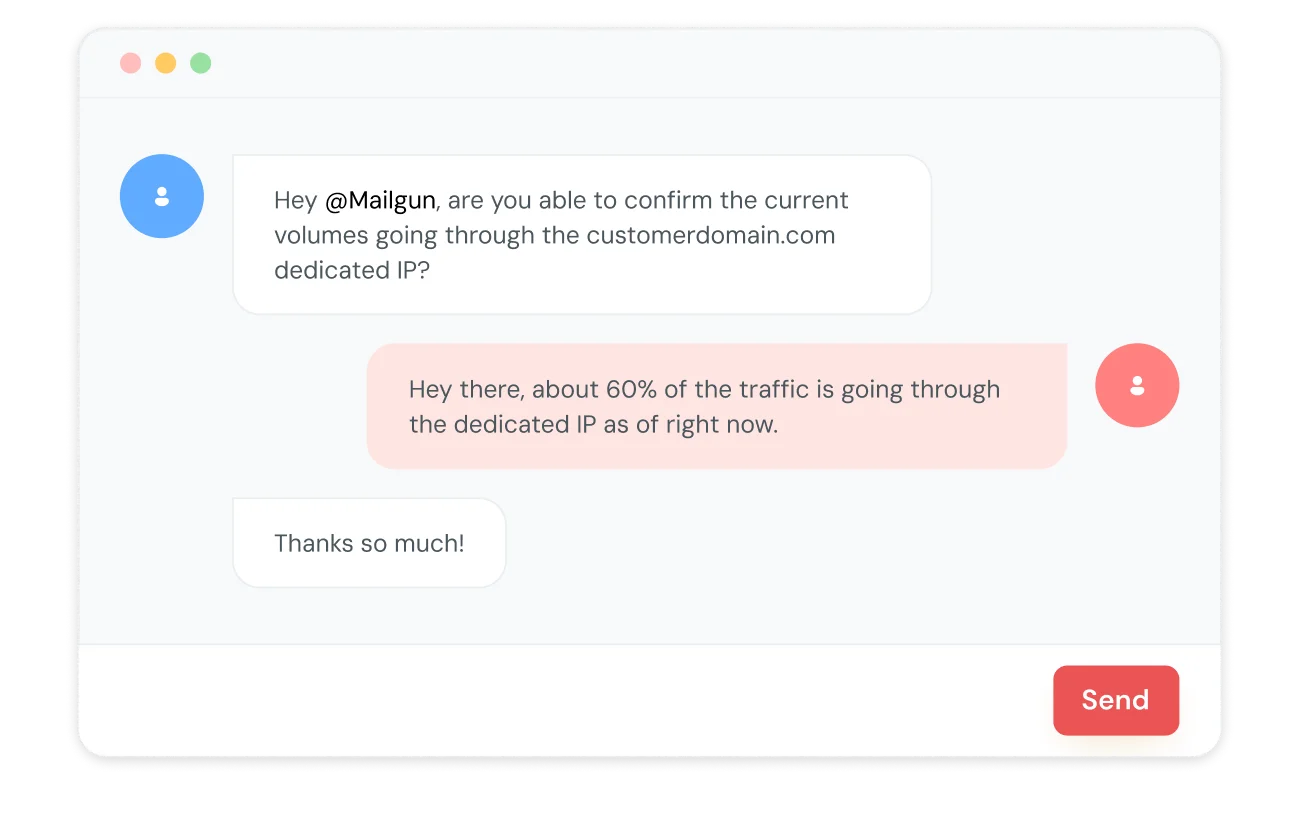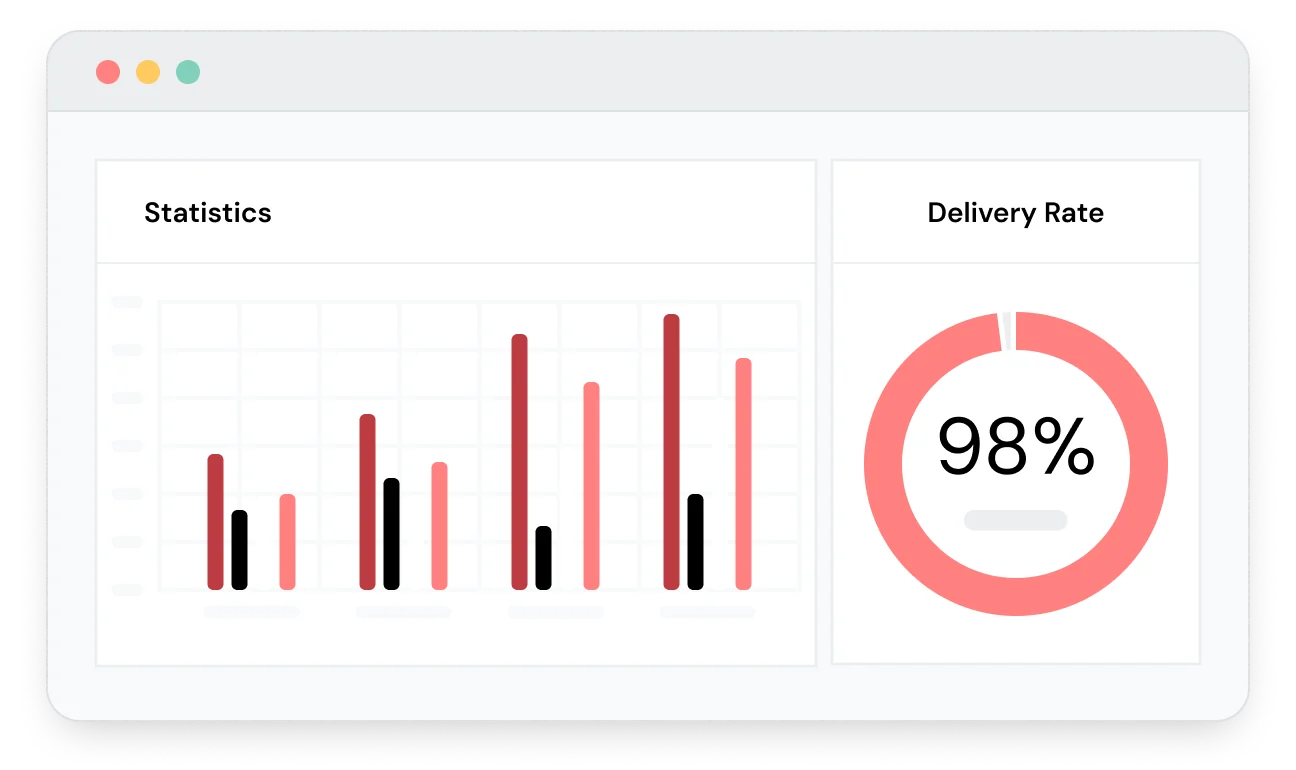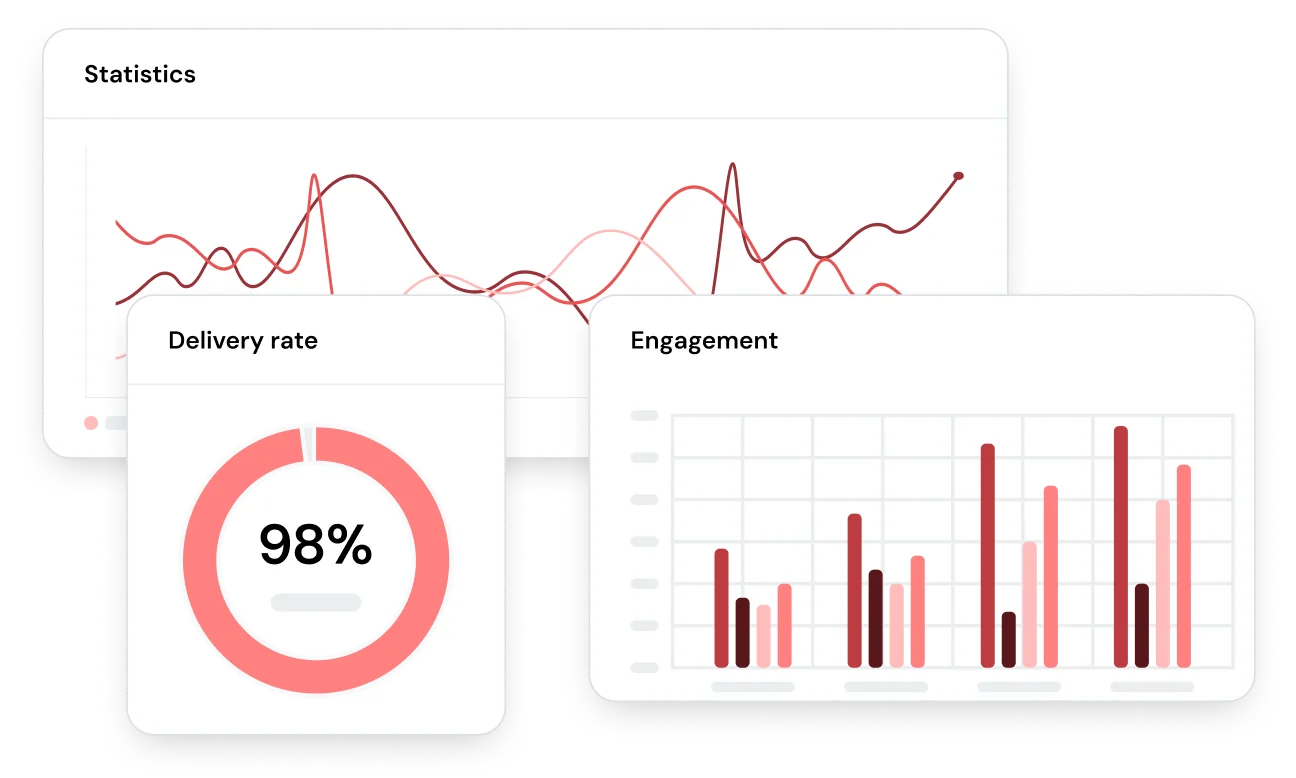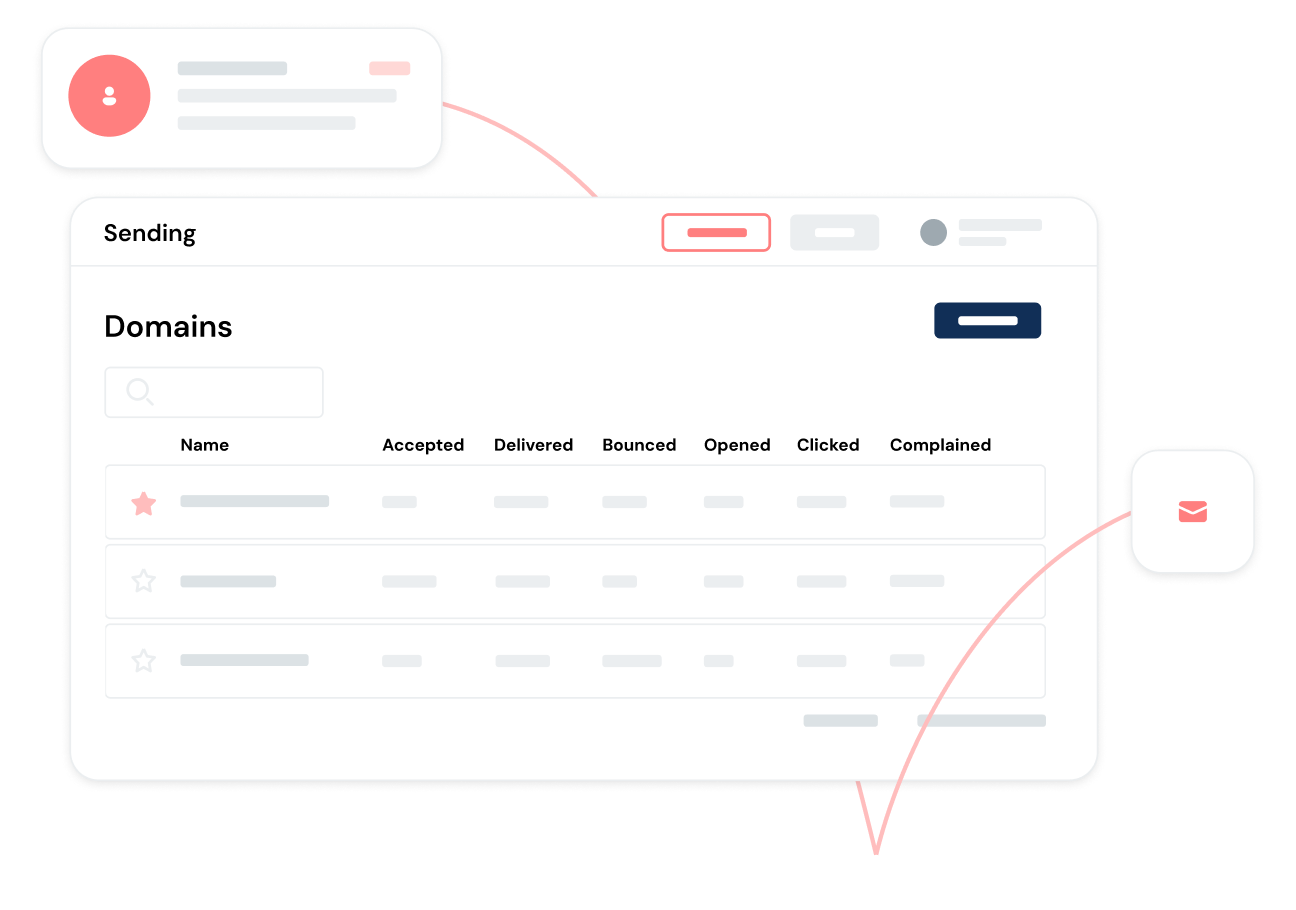
Increase email deliverability by improving your reputation
In today’s digital landscape, email is still the go-to channel — powering marketing campaigns, team collaboration, and sales outreach alike. Yet even the most compelling email can fall flat if your sender reputation isn’t solid. With our email reputation service, you get proactive insights and safeguards to maintain a healthy sending profile, ensuring your messages land where they belong: the inbox.
“Email reputation” or sender reputation is an important factor mailbox providers (mail servers) such as Google’s Gmail, Microsoft Outlook, or Yahoo Mail, use to score the credibility of your organization as an email sender. Each mailbox provider has its own complex algorithm that tracks and updates your sender reputation, which is based on both your domain and your IP address (IP). Email reputation services exist to help you track and optimize your email reputation to optimize email deliverability.
